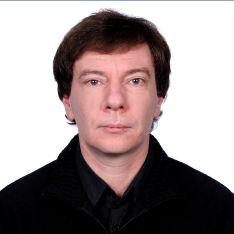Preparation and Application of Nanowires
A special issue of Nanomaterials (ISSN 2079-4991). This special issue belongs to the section "Nanoelectronics, Nanosensors and Devices".
Deadline for manuscript submissions: closed (31 December 2021) | Viewed by 21902
Special Issue Editor
2. Russian Academy of Sciences, Ioffe Institute, Polytechnicheskaya 26, 194021 St. Petersburg, Russia
Interests: modeling, synthesis, and properties of semiconductor nanowires; semiconductor nanostructures; nucleation theory with applications
Special Issues, Collections and Topics in MDPI journals
Special Issue Information
Dear colleagues,
The first semiconductor microwires were grown using the vapor–liquid–solid method in 1964. At the beginning of the 2000s, a rapid development of semiconductor nanowires began through the use of modern epitaxy techniques. This has resulted in tremendous progress in nanowire synthesis, characterization, and applications. One important advantage of nanowires is that they allow for a very efficient relaxation of elastic stress induced by lattice mismatch, thus enabling dislocation-free growth on dissimilar substrates such as silicon for III-V nanowires, and in nanowire heterostructures. Semiconductor nanowires are now widely considered as fundamental blocks of nanoscience and nanotechnology. This Special Issue will share the latest achievements in preparation, fundamental studies, and applications of nanowires in different material systems. Special emphasis will be put on the synthesis methods for fabrication of highly regular arrays of nanowires, ternary III–V nanowires and heterostructures based on such nanowires, morphological and crystal phase control in nanowires, advanced characterization techniques, and nanowires applications in electronics, photonics, and sensing.
Prof. Vladimir G. Dubrovskii
Guest Editor
Manuscript Submission Information
Manuscripts should be submitted online at www.mdpi.com by registering and logging in to this website. Once you are registered, click here to go to the submission form. Manuscripts can be submitted until the deadline. All submissions that pass pre-check are peer-reviewed. Accepted papers will be published continuously in the journal (as soon as accepted) and will be listed together on the special issue website. Research articles, review articles as well as short communications are invited. For planned papers, a title and short abstract (about 100 words) can be sent to the Editorial Office for announcement on this website.
Submitted manuscripts should not have been published previously, nor be under consideration for publication elsewhere (except conference proceedings papers). All manuscripts are thoroughly refereed through a single-blind peer-review process. A guide for authors and other relevant information for submission of manuscripts is available on the Instructions for Authors page. Nanomaterials is an international peer-reviewed open access semimonthly journal published by MDPI.
Please visit the Instructions for Authors page before submitting a manuscript. The Article Processing Charge (APC) for publication in this open access journal is 2900 CHF (Swiss Francs). Submitted papers should be well formatted and use good English. Authors may use MDPI's English editing service prior to publication or during author revisions.
Keywords
- semiconductor nanowires
- vapor–liquid–solid growth
- heterostructures
- molecular beam epitaxy
- ternary III–V material systems
- modeling
- optical and structural characterization
- crystal phase
- applications of nanowires






